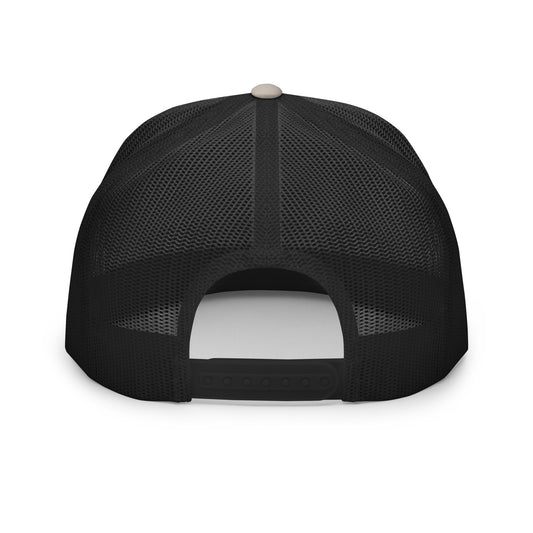
Splitgate 2: How To Dominate Pro Players
Joshua BrunhoffTo become the best Splitgate 2 player, you'll need to master the unique blend of traditional arena shooter mechanics and groundbreaking portal-based strategy. This master class document will guide you from a complete beginner to a formidable force on the battlefield, leveraging the game's core features and advanced techniques.
Master Class: Dominating Splitgate 2 – From Zero to Pro
Introduction to Splitgate 2: The Portal-Powered Arena Shooter
Welcome to Splitgate 2, a free-to-play, fast-paced multiplayer first-person shooter developed by 1047 Games. Building upon its popular predecessor, Splitgate 2 redefines the FPS genre by integrating player-controlled portals, creating a dynamic and strategic combat experience. Released on June 6, 2025, after a successful open beta period, the game is available across PC (Steam, Epic, Windows), Xbox Series X/S, Xbox One, PlayStation 4, and PlayStation 5, featuring full cross-play functionality.
At its core, Splitgate 2 combines the tight gunplay and competitive spirit of classic arena shooters like Halo with the mind-bending traversal and tactical possibilities of the Portal series. This unique fusion means that raw aim and movement skills are only half the battle; mastering portal placement and manipulation is crucial for victory.
Chapter 1: The Fundamentals – Getting Started
1.1 Core Mechanics: Movement and Gunplay
Before diving into portals, let's establish a solid FPS foundation:
-
Movement: Standard first-person shooter controls apply. Practice strafing, jumping, crouching, and sliding to make yourself a harder target. Fluid movement is key to survival and engagement.
-
Gunplay: Splitgate 2 emphasizes skill-based gunplay.
-
Aiming: Focus on precision. Many weapons are hitscan, meaning bullets hit instantly where you aim.
-
Headshots: Always aim for the head. Headshots deliver significantly more damage and are critical for securing quick eliminations.
-
Weapon Variety: Experiment with the more than 25 weapons available. Understand their effective ranges, recoil patterns, and fire rates.
-
Power Weapons: Learn map spawns for powerful weapons like the "Borealis." These can turn the tide of a fight.
-
1.2 Understanding Portals: Your New Dimension
Portals are the heart of Splitgate 2. You have a portal gun that allows you to create two interconnected wormholes on designated surfaces.
-
Placing Portals: You can launch a portal with just one button. Look for the blue, shimmering surfaces on maps – these are "portal-surfaces" where you can create portals.
-
Interconnectedness: When you place a second portal, it automatically links to the first. You can only have two active portals at a time. Placing a third will destroy your oldest active portal.
-
Seeing Through Portals: You can see through your portals and shoot through them, allowing for unexpected angles and safe peeking.
-
Momentum Conservation: This is crucial! Any momentum you have (from running, jumping, or falling) is conserved when you pass through a portal. This allows for incredible slingshots, high-flying jumps, and rapid repositioning.
-
Portal Destruction:
-
Self-Destruction: You can choose to destroy your own portals.
-
Enemy Portals: Enemies can destroy your portals by shooting them. Similarly, you can destroy theirs.
-
Chapter 2: Advanced Portal Strategies – Thinking in Three Dimensions
This is where Splitgate 2 truly shines. Mastering these techniques will elevate your gameplay dramatically.
2.1 Offensive Portal Plays
-
Flanking and Repositioning: The most fundamental use. If an enemy is focused on one direction, place a portal behind or beside them to attack from an unexpected angle.
-
Portal Traps/Ambush: Place two portals in a location where enemies are likely to pass through your line of sight. When an enemy appears, shoot through your portal for an easy kill. For example, place one portal looking at a doorway and another behind a cover.
-
Portal Peeking/Jousting: Instead of peeking around a corner, place a portal. You can quickly pop in and out of the portal to shoot enemies while minimizing your exposure. This is highly effective with sniper rifles or high-damage weapons.
-
Cross-Map Engagement: On larger maps, you can place portals to cover long distances quickly, allowing you to get to objectives or engage enemies across the map in seconds.
-
Aerial Assaults: Use momentum conservation to launch yourself through portals and engage enemies from above. This is particularly effective with shotguns or close-range weapons.
2.2 Defensive & Utility Portal Plays
-
Escape Routes: Always have an exit strategy. If you're caught in a bad fight, quickly throw a portal to a safe location and escape.
-
High Ground Advantage: Use portals to quickly gain high ground, providing a superior vantage point for shooting or escaping.
-
Blocking Enemy Portals: If an enemy attempts to place a portal on a surface, quickly place your own portal there to deny their entry or exit. This is a crucial counter-play in competitive matches.
-
Healing/Reloading: Portal to a safe spot to regenerate shields or reload your weapon, then portal back into the fight.
-
Objective Play: Use portals to rapidly move to and from objectives, whether it's capturing a zone in Hotzone or picking up flags in Capture the Flag.
2.3 Momentum and Advanced Movement
-
Portal Boosting/Slingshotting: By running or falling into a portal placed on a wall or floor, and having the exit portal positioned strategically, you can launch yourself with incredible speed and distance. Practice different angles to maximize your momentum. This is key for rapid traversal and aggressive pushes.
-
Infinite Loops: In certain areas with two opposing portal surfaces, you can create a loop. While generally not combat-effective, it's a fun way to understand momentum and map geometry.
Chapter 3: Character Classes & Loadouts
Splitgate 2 introduces character classes, adding another layer of strategy. There are three classes available: Aeros, Meridian, and Sabrasque. Each comes with its own unique passive ability, active ability, equipment, and a specific weapon pool.
-
Understanding Your Class: Before each match, consider the game mode and your team's composition.
-
Passive Ability: A constant benefit.
-
Active Ability: A powerful, cooldown-based skill that can be used at critical moments.
-
Equipment: Grenades, utility items, etc., that complement your class.
-
Weapon Pool: Determines which weapons are available to your class from weapon pickups or spawns.
-
-
Experimentation: Play with all classes to find which best suits your playstyle and the demands of different maps and modes. Your progress with classes and battle pass tokens carries over from the beta.
Chapter 4: Maps, Modes & The Lab
Splitgate 2 boasts a "metric ton of maps, weapons and modes."
-
Map Knowledge: Learn the portal surfaces on each map. Identify key power positions, chokepoints, and common enemy routes. Maps in Splitgate 2 are designed to be more symmetrical.
-
Game Modes:
-
Arena Modes (e.g., Hotzone, Firecracker): Focus on tight, competitive team play. Portal usage is critical for objective control and quick rotations.
-
Onslaught Modes (e.g., Domination, Team Deathmatch): Larger-scale battles with 24 players. Portals are essential for managing large engagements and controlling space.
-
Battle Royale: A unique take on the genre, featuring "World Portals" that connect entirely different biomes within a gigantic map called "Split Worlds." This mode requires adapting portal strategies to an evolving environment, scavenging for loot, and managing Buy Stations.
-
-
The Lab (Map Creator): Splitgate 2 includes a player-facing map creator. Spend time in The Lab to understand map design principles and find creative portal placements you can use in official maps. This is an excellent tool for practice and custom game creation.
Chapter 5: Teamwork and Communication
Splitgate 2 is a team-based game. Even in modes like Battle Royale, effective team play is vital.
-
Callouts: Use clear and concise callouts to inform your teammates of enemy positions, portal placements, and important loot. Examples: "Enemy through portal, left!" "Portal to high ground, pushing!"
-
Coordinated Portal Plays: Work with your team to set up cross-fire through portals or to create shared escape routes. A well-placed team portal can trap multiple enemies.
-
Objective Focus: Always prioritize the objective of the game mode. Using portals to quickly secure or defend objectives is often more important than simply chasing kills.
-
Reviving Teammates (Battle Royale): Learn to effectively use "Player Pods" to revive downed teammates, often by portaling to safety before initiating the revive.
Chapter 6: Settings and Optimization
Tailoring your settings can significantly improve your performance.
-
Sensitivity: Find a mouse sensitivity (or controller sensitivity) that allows for both precise aim and quick turns. There’s no universal “best” setting; experiment to find what feels comfortable.
-
FOV (Field of View): A higher FOV can provide a wider view of the battlefield, allowing you to spot enemies and portal surfaces more easily. However, it can also make distant targets smaller.
-
Keybinds: Customize your keybinds for comfortable and efficient portal placement and ability usage. Having portals easily accessible is paramount.
-
Graphics Settings: Optimize your graphics settings for performance. Prioritize frame rate (FPS) over visual fidelity, especially in a fast-paced shooter. A consistent and high frame rate ensures smooth gameplay and responsiveness.
Chapter 7: Practice and Continuous Improvement
Becoming the best requires dedication.
-
Warm-Up Routine: Before competitive matches, spend time in the training range or a custom lobby to warm up your aim and practice portal movements.
-
Aim Training: Utilize third-party aim trainers or in-game training modes to refine your precision.
-
Review Your Gameplay: Record your matches and review them. Identify mistakes, missed opportunities, and areas for improvement. Pay attention to how enemies use portals against you.
-
Learn from Pros: Watch high-level players and streamers. Observe their portal strategies, map awareness, and decision-making.
-
Custom Lobbies: Create custom lobbies with friends to experiment with wild portal combinations and practice specific scenarios.
Chapter 8: Mindset of a Master Player
-
Patience and Adaptability: Not every portal play will work. Learn from failed attempts and adapt your strategies mid-match.
-
Spatial Awareness: Always be aware of your surroundings, potential portal surfaces, and enemy positions. Think several steps ahead.
-
Creativity: Splitgate 2 rewards creative thinking. Don't be afraid to try unconventional portal placements or movements.
-
Communication & Positivity: Maintain clear communication with your team. A positive attitude, even in tough matches, can make a difference.
-
Enjoy the Portals: Above all, have fun with the unique mechanics that Splitgate 2 offers. The freedom and creativity provided by portals are what make this game truly special.
By diligently applying these principles and constantly practicing, you'll be well on your way to mastering Splitgate 2 and dominating the portal-powered arena!














